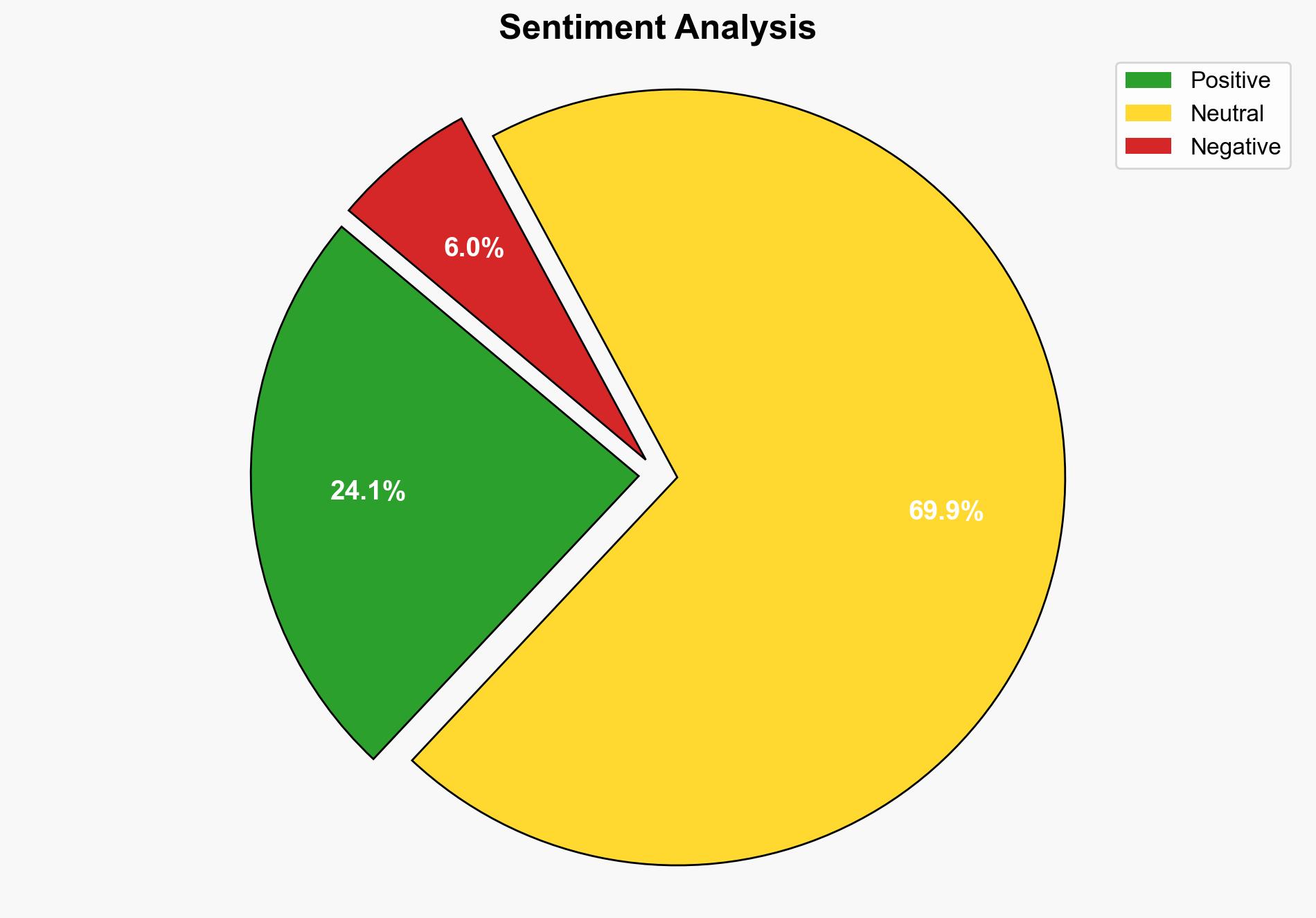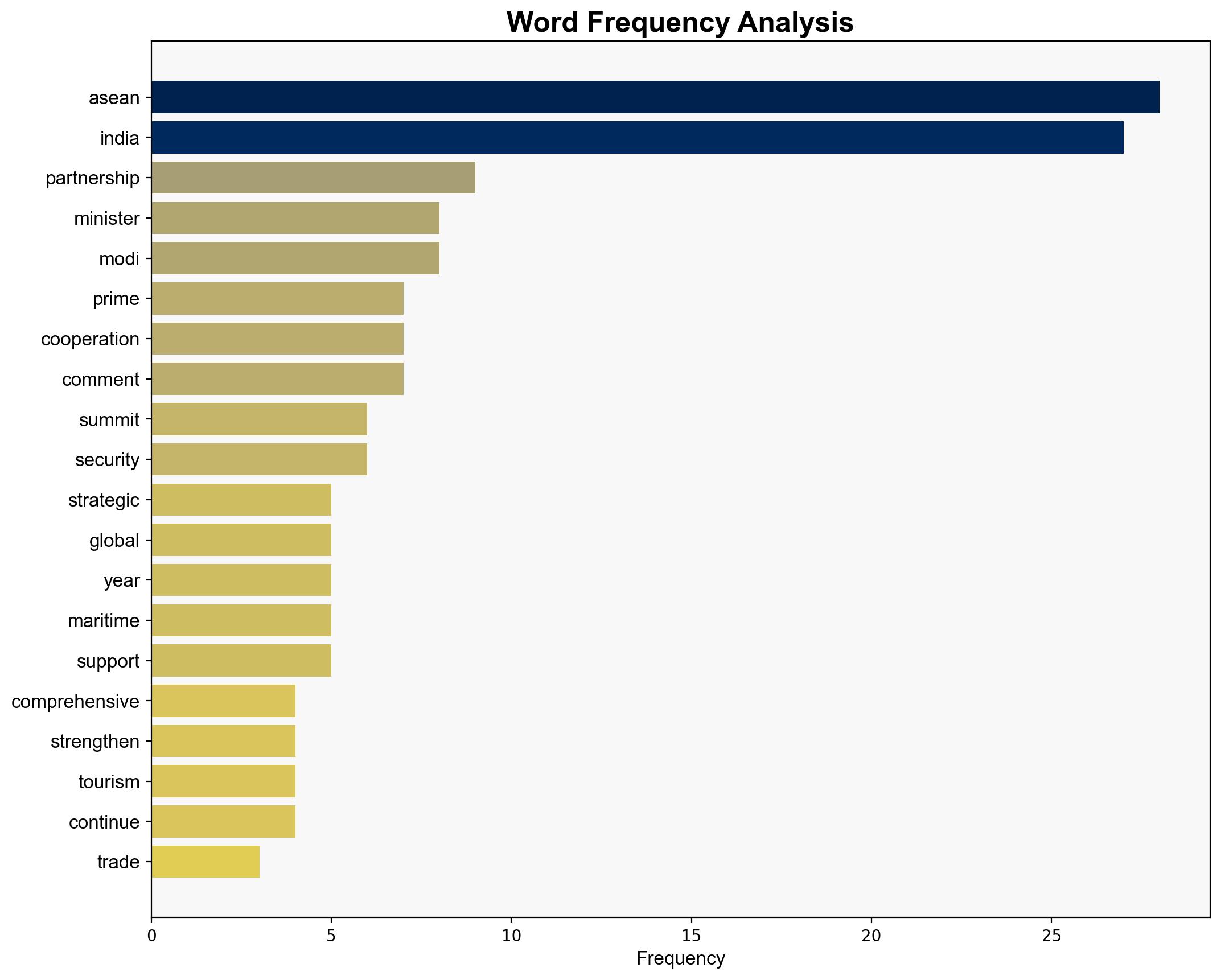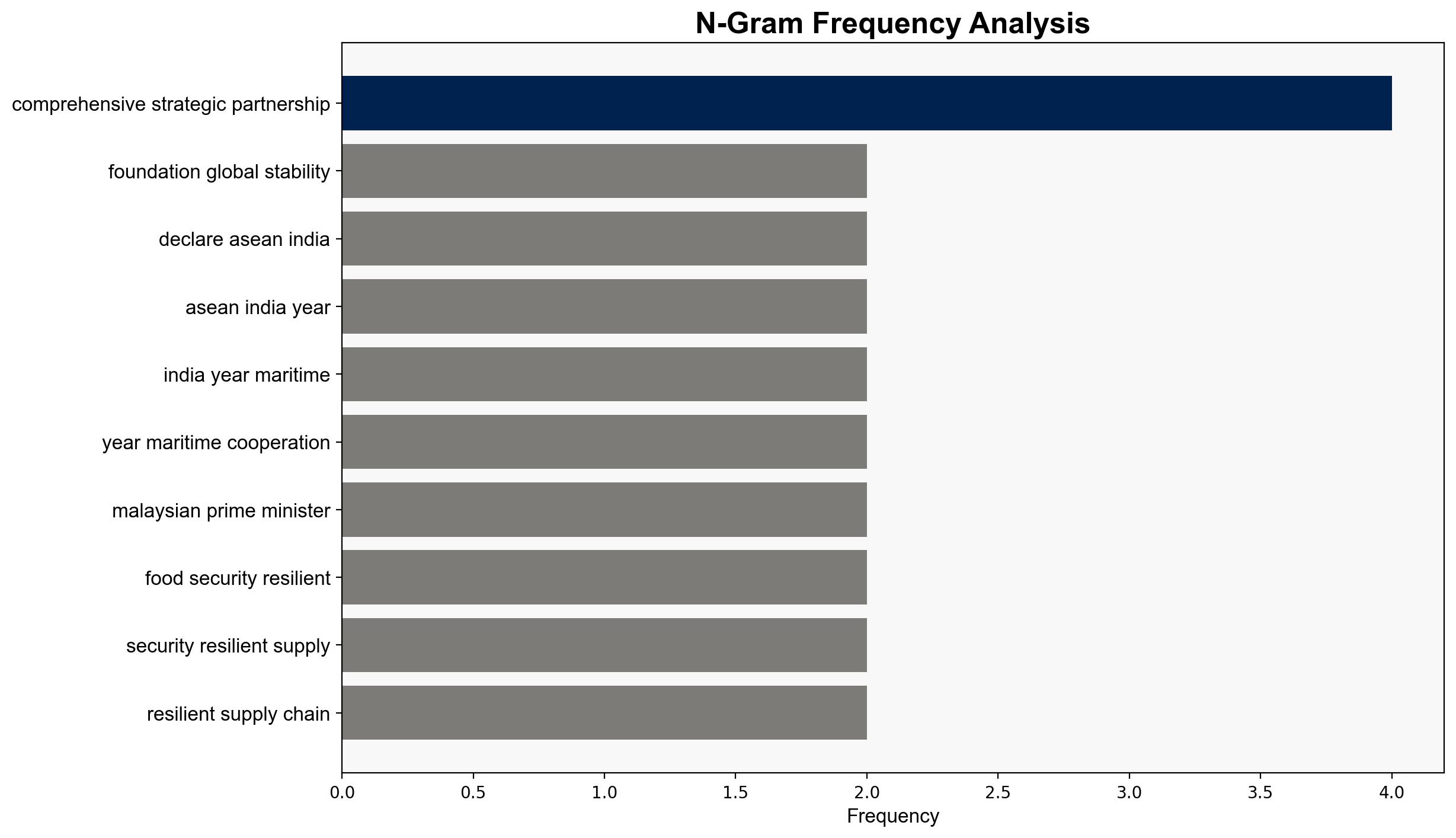Modi calls for early review of IndiaASEAN trade pact declares 2026 Year of Maritime Cooperation – BusinessLine
Published on: 2025-10-27
Intelligence Report: Modi calls for early review of IndiaASEAN trade pact declares 2026 Year of Maritime Cooperation – BusinessLine
1. BLUF (Bottom Line Up Front)
The most supported hypothesis is that India is strategically positioning itself to counterbalance China’s influence in the Indo-Pacific region by strengthening ties with ASEAN through economic and maritime cooperation. Confidence level: Moderate. Recommended action: Enhance diplomatic engagement and economic initiatives with ASEAN to solidify alliances and counter regional instability.
2. Competing Hypotheses
1. **India’s Strategic Realignment Hypothesis**: India is seeking to realign its strategic partnerships in response to growing Chinese assertiveness by enhancing economic and maritime cooperation with ASEAN, thereby reinforcing its Act East policy.
2. **Economic Expansion Hypothesis**: The primary motive behind the early review of the India-ASEAN trade pact is to boost economic growth and trade volume, with maritime cooperation serving as a secondary objective to secure trade routes.
Using the Analysis of Competing Hypotheses (ACH) 2.0, the first hypothesis is better supported by Modi’s emphasis on maritime cooperation and regional stability, which aligns with geopolitical rather than purely economic objectives.
3. Key Assumptions and Red Flags
– **Assumptions**: It is assumed that ASEAN nations are uniformly receptive to India’s initiatives and that China’s response will be passive.
– **Red Flags**: Potential overestimation of ASEAN’s willingness to pivot away from China. Lack of detailed economic data supporting the trade pact’s immediate benefits.
– **Blind Spots**: Limited information on internal ASEAN dynamics and potential Chinese countermeasures.
4. Implications and Strategic Risks
– **Economic Risks**: Failure to achieve tangible economic benefits could weaken India’s position.
– **Geopolitical Risks**: Escalation of tensions with China if perceived as a containment strategy.
– **Cybersecurity Risks**: Increased digital collaboration may expose vulnerabilities.
– **Psychological Risks**: Misalignment between public expectations and actual outcomes could lead to domestic discontent.
5. Recommendations and Outlook
- Enhance diplomatic channels with ASEAN to ensure mutual understanding and cooperation.
- Invest in joint maritime security initiatives to solidify strategic partnerships.
- Scenario Projections:
- Best Case: Strengthened India-ASEAN relations lead to increased regional stability and economic growth.
- Worst Case: Chinese countermeasures destabilize the region, leading to economic and security challenges.
- Most Likely: Incremental progress in economic and maritime cooperation with ASEAN, with ongoing strategic competition with China.
6. Key Individuals and Entities
– Narendra Modi
– Anwar Ibrahim
– ASEAN member states
– Ministry of External Affairs (India)
7. Thematic Tags
national security threats, cybersecurity, counter-terrorism, regional focus




